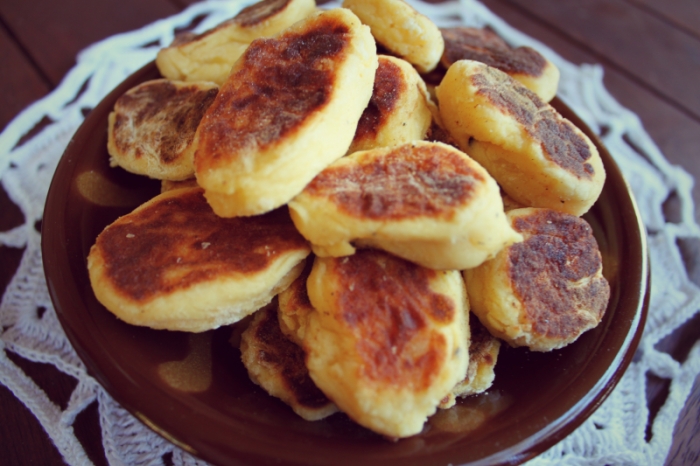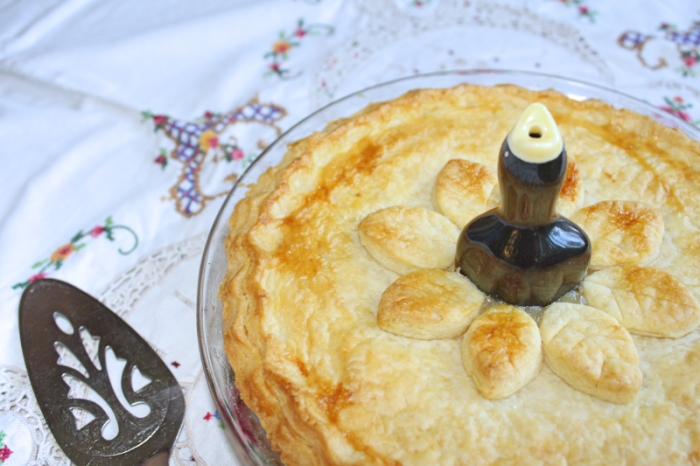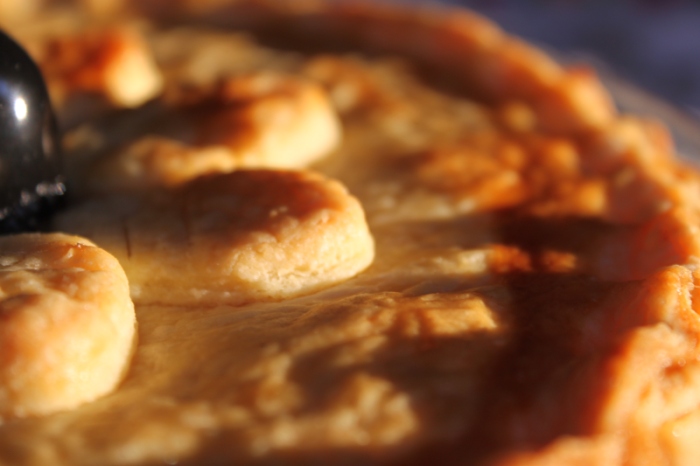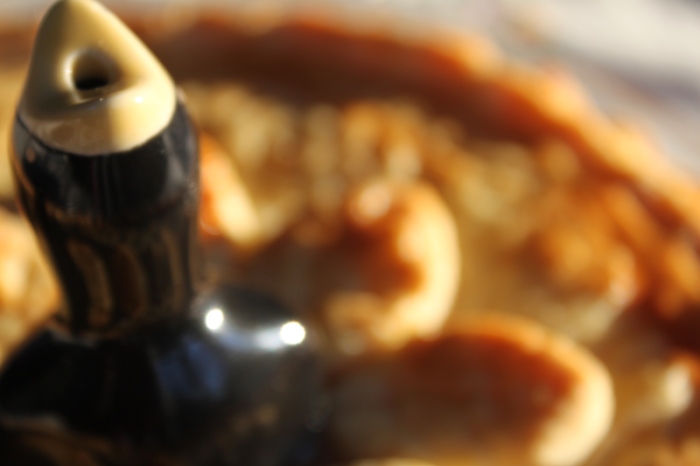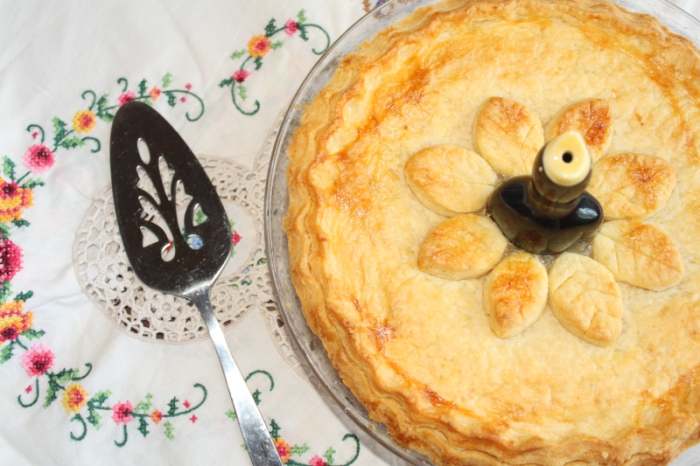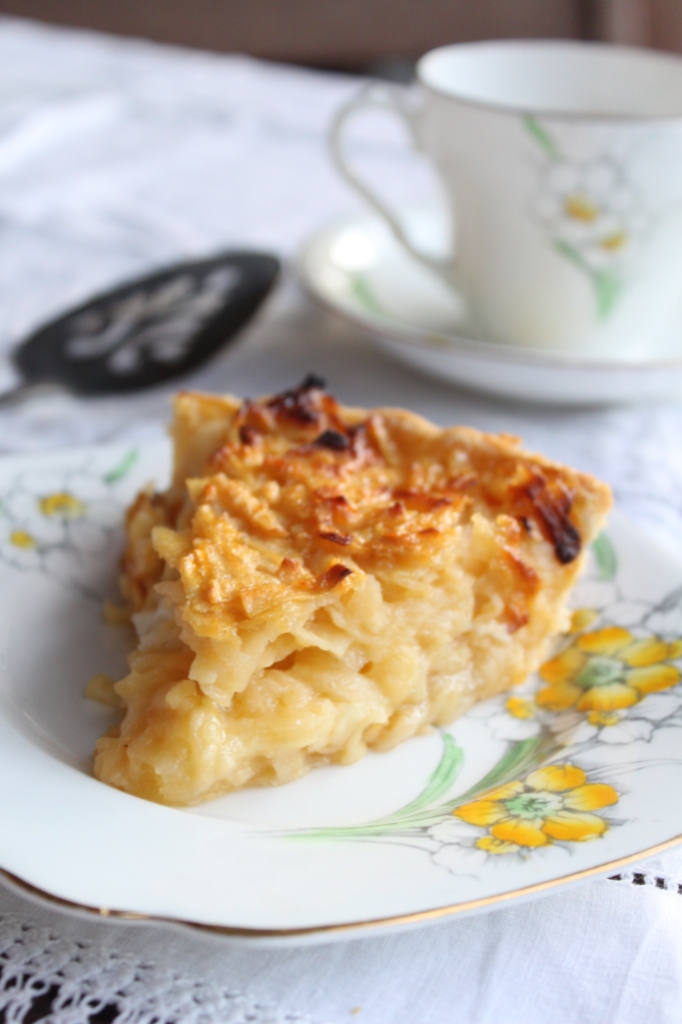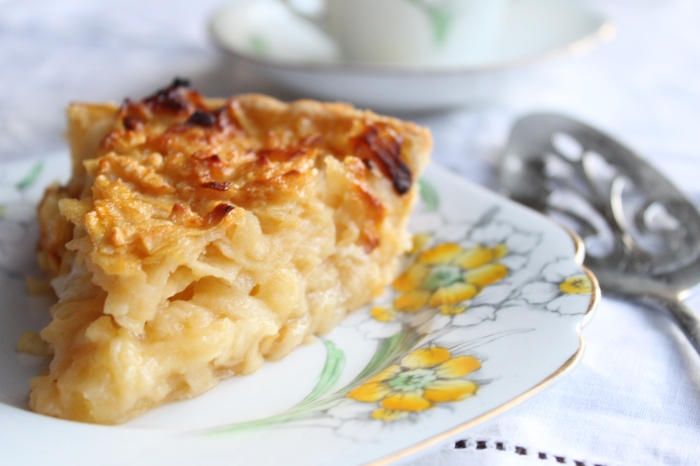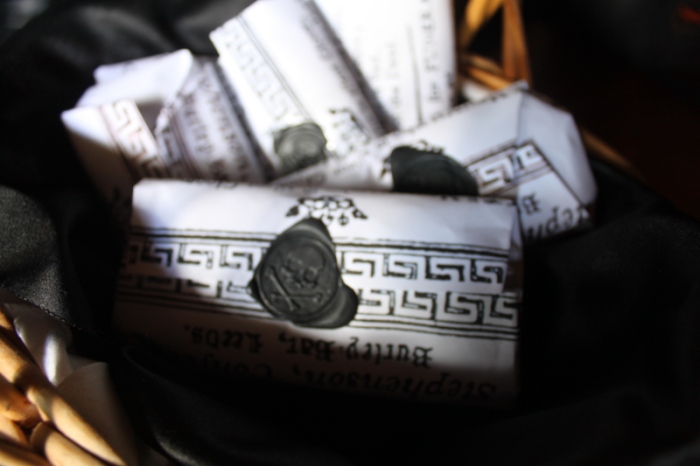
Here we are again, still playing catch-up with the Historical Food Fortnightly challenges I’m afraid, but as of next fortnight we should be back on schedule. For the ‘Sacred or Profane’ challenge I picked a topic which I’ve been curious about for a while now. For those of you who are seeing these for the first time, welcome to the weird, wacky and downright morbid world of funeral foods.
In Victorian times death was a big deal, maybe not on quite the same scale as an Egyptian pyramid, but certainly expensive enough to ruin a family and the focus of a complex web of symbolism which dictated the families clothing and behaviour for months, if not years, after the death. One of the most curious of these practices was the use of special biscuits in order to invite people to the funeral or to give out as a keepsake to guests. Although the use of biscuits at funerals seems to have been quite widespread in Northern England and parts of America, the form and usage varied based on the region and the social class of the deceased.
Essentially there were two types of biscuit, one was a Savoy or Naples biscuit (like a modern sponge finger or ladyfinger) and the second type was a kind of shortbread (The Great British Bake Off has a great video about these biscuits which you can watch here). The shortbread biscuits could be flavoured with caraway seeds and were often stamped with a mould, like the one below.

This 17th century stone mould from Yorkshire was owned by Thomas Beckwith and was used to mark funeral biscuits. From Sylvanius Urban, ed., The Gentleman’s Magazine (London, England) (London: Printed by Nichols and Son, at Cicero’s Head, Red Lion Passage, Fleet-Street, 1802), fig. 2.
Depending on how the biscuits were to be given out they could be bundled into parcels of between 2 and 6 biscuits, wrapped in a paper printed with a poem or verse and sealed with black wax. A correspondent of ‘The Gentleman’s Magazine’ in 1802 describes a time when “The paper in which these biscuits were sealed was printed on one side with a coffin, cross-bones, skulls, hacks, spades, hour-glasses etc.”[1] You can see an example of one of these wrappers on the Pitt Rivers Museum website here.
There were a number of different ways to distribute the biscuits:
- Prior to the funeral a woman could be sent around ‘bidding’ friends and family to attend the funeral, and handing out wrapped packets of biscuits.
- The biscuits could be served during the wake or just before the last viewing of the body.
- A basket of wrapped parcels of biscuits could be left on a table for people to take home with them.
- Packets of wrapped biscuits could be sent to the homes of family and friends who were unable to attend.
- Packets of wrapped biscuits could be send to the homes of people who attended as a keepsake.[2]
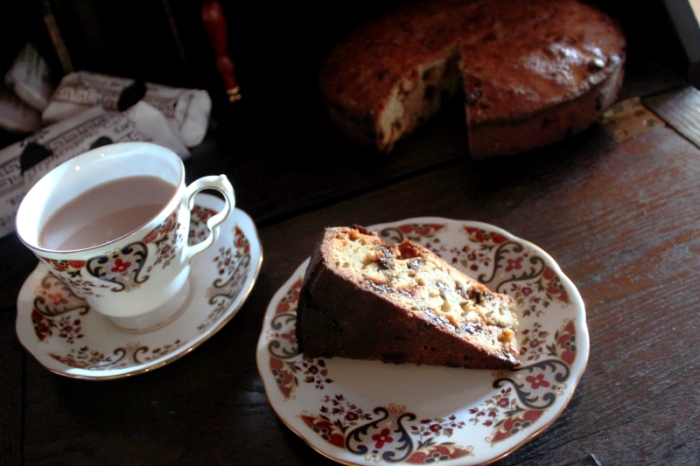
An alternative was a funeral cake, which could either be small individual spiced cakes, or a larger (8-11 inches in diameter), round cake made of “flour, water, yeast, currants, and some kind of spice”[3]. Joseph Hunter makes an interesting distinction between when cake was served rather than biscuits:
“When cakes such as these are presented to the persons invited to attend the funeral it is understood to intimate that it is a pay-burying, i.e. that each person is expected to contribute something, usually a shilling, towards the expense. When it is not a pay-burying a Naples biscuit is the arvel-bread : and after funerals of people of a better condition, two Naples biscuits are usually sent to the friends of the deceased, with gloves, hat-band or scarf, or all of these.”[4]
Another use for funeral biscuits is documented in the village of Cherry Burton. Apparently in this Yorkshire village it was considered necessary to place the bee-hive in mourning, and so it was draped in black fabric with a propitiatory offering of funeral biscuit soaked in wine left for the bees.[5] There was a strong link between wine and the biscuits for humans too, and nearly all of the sources which I can find mentions the two together, even amongst teetotallers[6].
![Even though this picture is quite a bit earlier than the other sources we've been looking at, I think its very interesting to see the girl serving wine on the left (and the text mentions that those present will drink several glasses before and after the funeral) and the girl on the right who has a plate of food. Could it be biscuits? Funeral Scene from The ceremonies and religious customs of the known world by Bernard Picart, 1737. Credit: Wellcome Library, London. Wellcome Images [CC BY 4.0]Bernard Picart, 1737. Credit: Wellcome Library, London. Wellcome Images http://wellcomeimages.org CC BY 4.0 http://creativecommons.org/licenses/by/4.0/](https://turnspitandtable.files.wordpress.com/2015/01/l0006640.jpg?w=800&resize=700%2C557)
- Even though this picture is quite a bit earlier than the other sources we’ve been looking at, I think its very interesting to see the girl serving wine on the left (and the text mentions that those present will drink several glasses before and after the funeral) and the girl on the right who has a plate of food. Could it be biscuits? Funeral Scene from The ceremonies and religious customs of the known world by Bernard Picart, 1737. Credit: Wellcome Library, London. Wellcome Images [CC BY 4.0]
The Recipes
In spite of all this information about eating funeral biscuits, there are very few extant recipes for either funeral biscuits or cakes. W.S. Steveley has recipes for ‘Funeral Buns’ and ‘Funeral Biscuits’[7] (available here pg. 16-17) but there are so few instructions and the quantities are so large that I wasn’t keen to try either of them. His buns, however, do shed some light on the type of cakes that would have been served. The most important features, which also show up in the descriptions above, is the inclusion of currants and spices (often cinnamon and/or caraway seeds).
There is also a 19th century recipe for Dutch doot cookjes (death cookies) from America which calls for 50lb of flour and makes some 300 cookies the size of saucers![8] But they don’t fit the mould for either of the two types of biscuits that I had read about. So instead I turned to the trusty Mrs. Beeton for my recipes.
SAVOY BISCUITS OR CAKES. 1748. INGREDIENTS.—4 eggs, 6 oz. of pounded sugar, the rind of 1 lemon, 6 oz. of flour. Mode.—Break the eggs into a basin, separating the whites from the yolks; beat the yolks well, mix with them the pounded sugar and grated lemon-rind, and beat these ingredients together for 1/4 hour. Then dredge in the flour gradually, and when the whites of the eggs have been whisked to a solid froth, stir them to the flour, &c.; beat the mixture well for another 5 minutes, then draw it along in strips upon thick cartridge paper to the proper size of the biscuit, and bake them in rather a hot oven; but let them be carefully watched, as they are soon done, and a few seconds over the proper time will scorch and spoil them. These biscuits, or ladies’-fingers, as they are called, are used for making Charlotte russes, and for a variety of fancy sweet dishes. Time.—5 to 8 minutes, in a quick oven. Average cost, 1s. 8d. per lb., or 1/2d. each.[9]
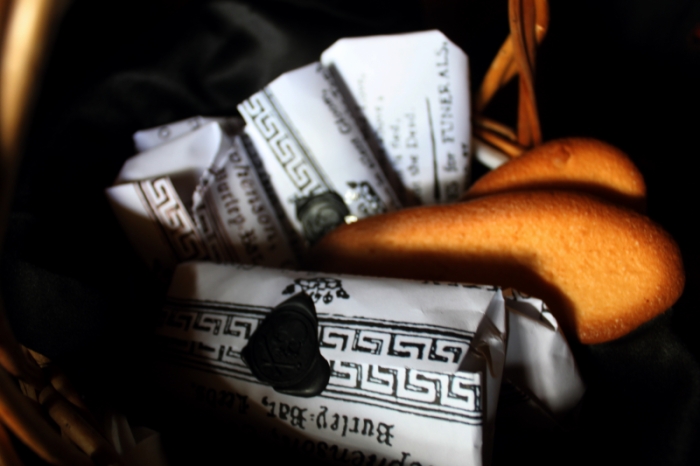
My Savoy biscuits didn’t turn out very well, they were very flat, so I haven’t provided a redaction for them although the recipe written quite clearly if you want to give it a try. The plain cake was also very dense, but I think that is probably inevitable with only 1tsp of baking powder. It is however rather tasty and wasn’t overpowered by the caraway as I had expected.
A NICE PLAIN CAKE. 1766. INGREDIENTS.—1 lb. of flour, 1 teaspoonful of Borwick’s baking-powder, 1/4 lb. of good dripping, 1 teacupful of moist sugar, 3 eggs, 1 breakfast-cupful of milk, 1 oz. of caraway seeds, 1/2 lb. of currants. Mode.—Put the flour and baking-powder into a basin; stir those together; then rub in the dripping, add the sugar, caraway seeds, and currants; whisk the eggs with the milk, and beat all together very thoroughly until the ingredients are well mixed. Butter a tin, put in the cake, and bake it from 11/2 to 2 hours. Let the dripping be quite clean before using: to insure this, it is a good plan to clarify it. Beef dripping is better than any other for cakes, &c., as mutton dripping frequently has a very unpleasant flavour, which would be imparted to the preparation. Time.—1-1/2 to 2 hours. Average cost, 1s. Seasonable at any time.[10]
The Redaction
A Nice Plain Cake
545g plain flour
1 tsp baking powder
113g beef dripping at room temperature
170g sugar
28g caraway seeds
225g currants
3 eggs
Approx. 300ml milk
- Heat the oven to 170°C and butter a 9” springform cake tin.
- Mix the flour and baking powder in a large bowl. Rub in the dripping with your fingertips until it is evenly distributed. Stir in the sugar, seeds and currants.
- Whisk together the eggs and 250ml milk then stir it into the dry ingredients. Add a little more milk, as necessary, until all the ingredients are wet and the mixture can be stirred.
- Bake the cake for about an hour, or until a skewer inserted into the middle comes out clean. It may be a good idea to place a tray under the cake to catch the dripping if it seeps out of the springform tin.
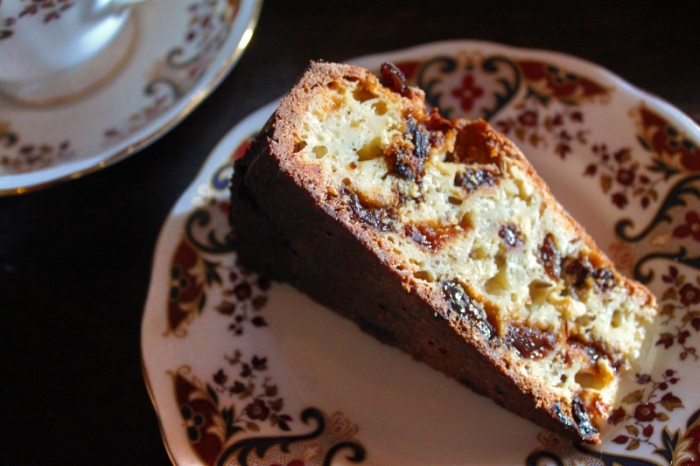
The Recipe: Mrs Beeton’s The Book of Household Management (available here)
The Date: 1861
How did you make it? See above.
Time to complete?: The cake took about 1hr 35, the biscuits took about 40 mins.
How successful was it?: The biscuits just didn’t rise at all, but they tasted ok. The cake was very, very dense and didn’t last very well over a number of days but it had a nice flavour and the currants were quite juicy. The only other thing is that the dripping gives off a rather meaty smell while cooking!
How accurate?: I think the cake recipe was probably the type of thing that women could make at home for a funeral, especially if you had to mass produce it in a hurry. The biscuits however seem a bit too fiddly for that, and certainly there were lots of specialists you could buy them from so that seems more likely to me. In terms of accuracy, I did beat the biscuits by hand! But maybe that was the problem.
[1] Sylvanius Urban, ed., The Gentleman’s Magazine (London, England) (London: Printed by Nichols and Son, at Cicero’s Head, Red Lion Passage, Fleet-Street, 1802), 105.
[2] Peter Brears, “Arvals, Wakes and Month’s Minds: Food for Funerals,” in Food and the Rites of Passage, ed. Laura Mason (Devon: Prospect Books, 2002), 103–105.
[3] Jonathan Boucher, Glossary of Archaic and Provincial Words, Edited by Joseph Hunter. – London, Black, Young & Young 1833-, ed. Joseph Hunter (London: Black, Young & Young, 1833), sec. Arvel–bread.
[4] Ibid.
[5] George Oliver, The History and Antiquities of the Town and Minster of Beverley, with Historical Sketches of the Abbeys of Watton and Meaux [&c.]., 1829, 499.
[6] T. W. Thompson, “Arval or Avril Bread,” Folklore 29, no. 1 (March 30, 1918): 85.
[7] W. S. Steveley, The New Whole Art of Confectionary: Sugar Boiling, Iceing, Candying, Jelly Making, &c. Which Will Be Found Very Beneficial to Ladies, Confectioners, Housekeepers, &c., Particularly to Such as Have Not a Perfect Knowledge of That Art (Sutton & Son, 1828), 16–17.
[8] Peter G. Rose, Food, Drink and Celebrations of the Hudson Valley Dutch (The History Press, 2009), 69–70.
[9] Isabella Beeton, ed., Beeton’s Book of Household Management (London: S.O Beeton, 1861), pt. 1748.
[10] Ibid., pt. 1766.
Bibliography
Beeton, Isabella, ed. Beeton’s Book of Household Management. London: S.O Beeton, 1861.
Boucher, Jonathan. Glossary of Archaic and Provincial Words, Edited by Joseph Hunter. – London, Black, Young & Young 1833-. Edited by Joseph Hunter. London: Black, Young & Young, 1833.
Brears, Peter. “Arvals, Wakes and Month’s Minds: Food for Funerals.” In Food and the Rites of Passage, edited by Laura Mason, 87–114. Devon: Prospect Books, 2002.
Oliver, George. The History and Antiquities of the Town and Minster of Beverley, with Historical Sketches of the Abbeys of Watton and Meaux [&c.]., 1829.
Rose, Peter G. Food, Drink and Celebrations of the Hudson Valley Dutch. The History Press, 2009.
Steveley, W. S. The New Whole Art of Confectionary: Sugar Boiling, Iceing, Candying, Jelly Making, &c. Which Will Be Found Very Beneficial to Ladies, Confectioners, Housekeepers, &c., Particularly to Such as Have Not a Perfect Knowledge of That Art. Sutton & Son, 1828.
Thompson, T. W. “Arval or Avril Bread.” Folklore 29, no. 1 (March 30, 1918): 84–86.
Urban, Sylvanius, ed. The Gentleman’s Magazine (London, England). London: Printed by Nichols and Son, at Cicero’s Head, Red Lion Passage, Fleet-Street, 1802.


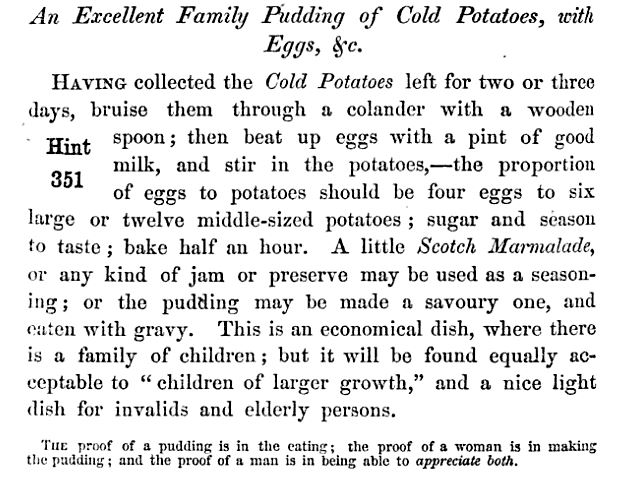





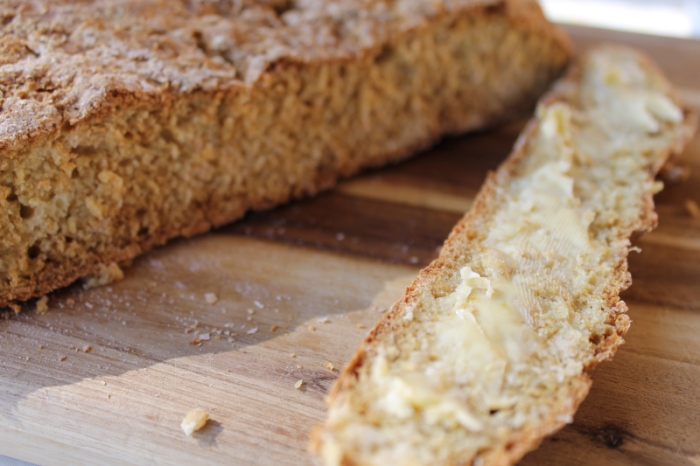
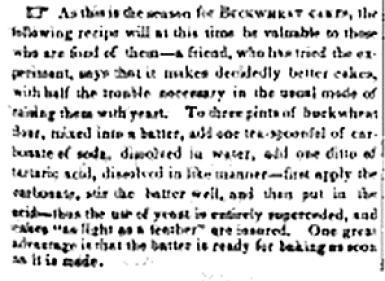
![By Boston Public Library [Public domain], via Wikimedia Commons](https://turnspitandtable.files.wordpress.com/2015/01/arm_and_hammer_brand_best_in_the_world.jpg?w=800&resize=700%2C437)
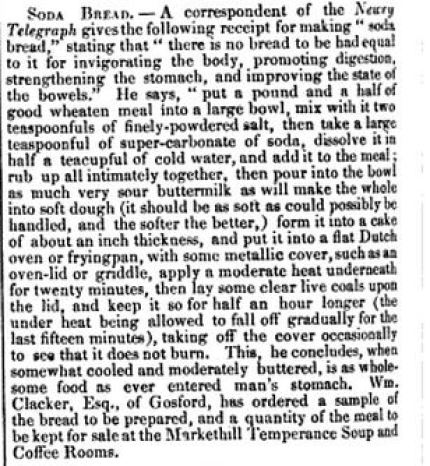
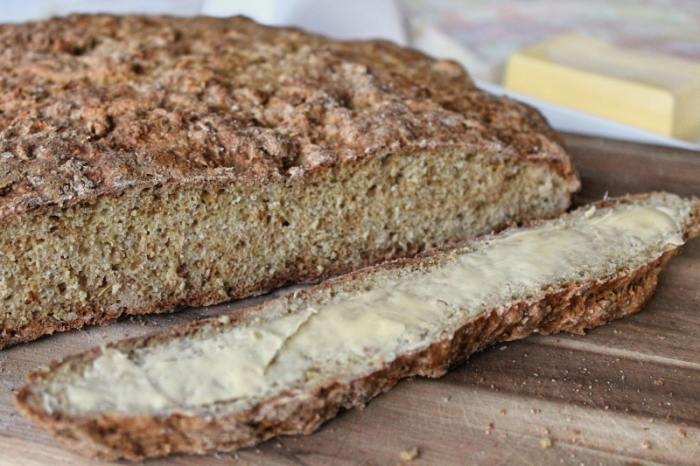



![Even though this picture is quite a bit earlier than the other sources we've been looking at, I think its very interesting to see the girl serving wine on the left (and the text mentions that those present will drink several glasses before and after the funeral) and the girl on the right who has a plate of food. Could it be biscuits? Funeral Scene from The ceremonies and religious customs of the known world by Bernard Picart, 1737. Credit: Wellcome Library, London. Wellcome Images [CC BY 4.0]Bernard Picart, 1737. Credit: Wellcome Library, London. Wellcome Images http://wellcomeimages.org CC BY 4.0 http://creativecommons.org/licenses/by/4.0/](https://turnspitandtable.files.wordpress.com/2015/01/l0006640.jpg?w=800&resize=700%2C557)


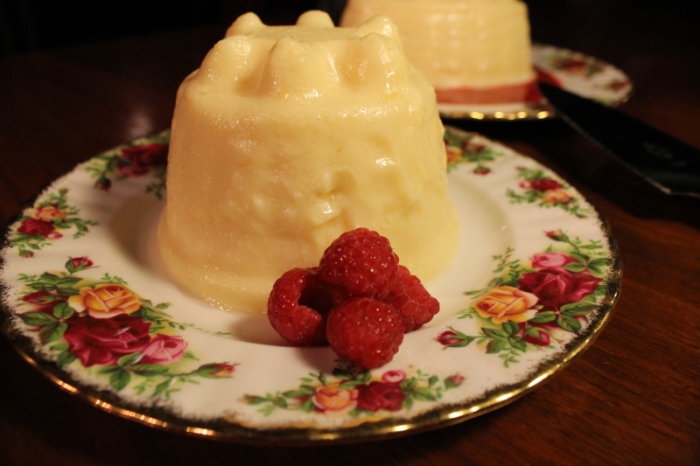
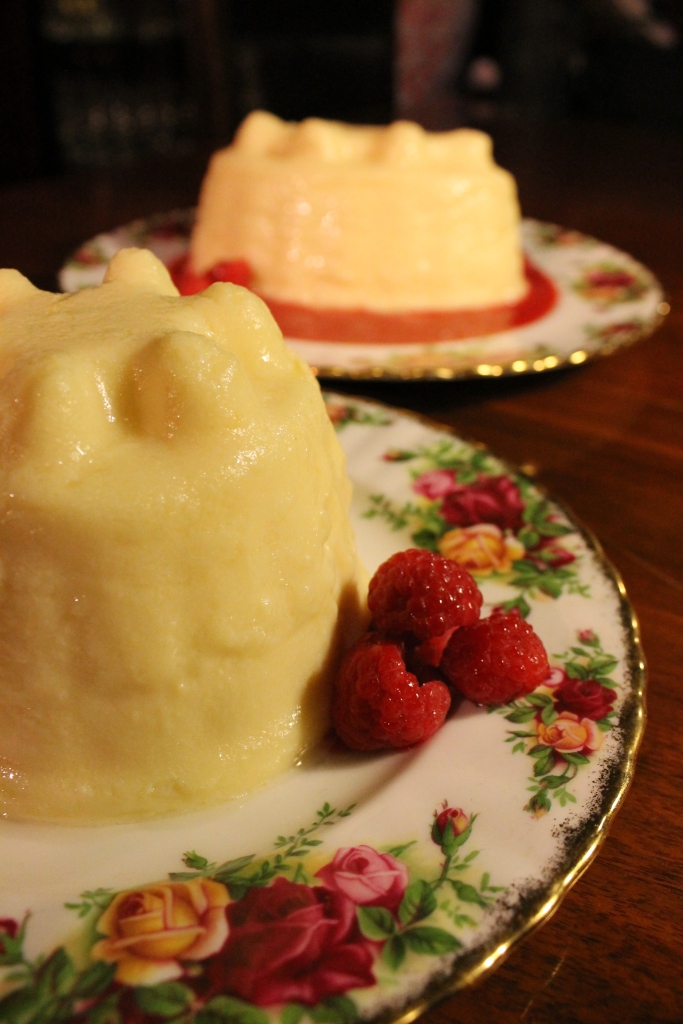




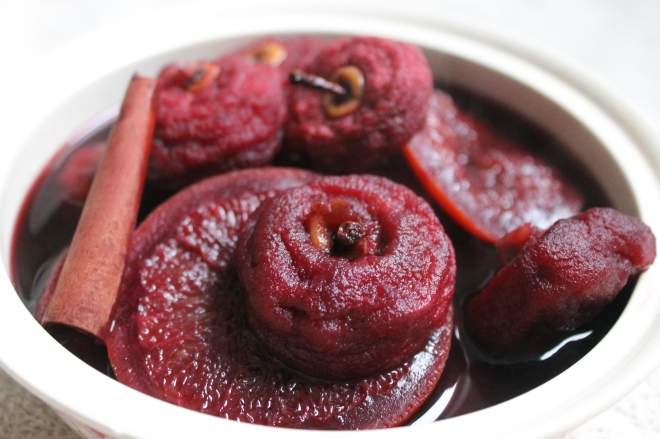
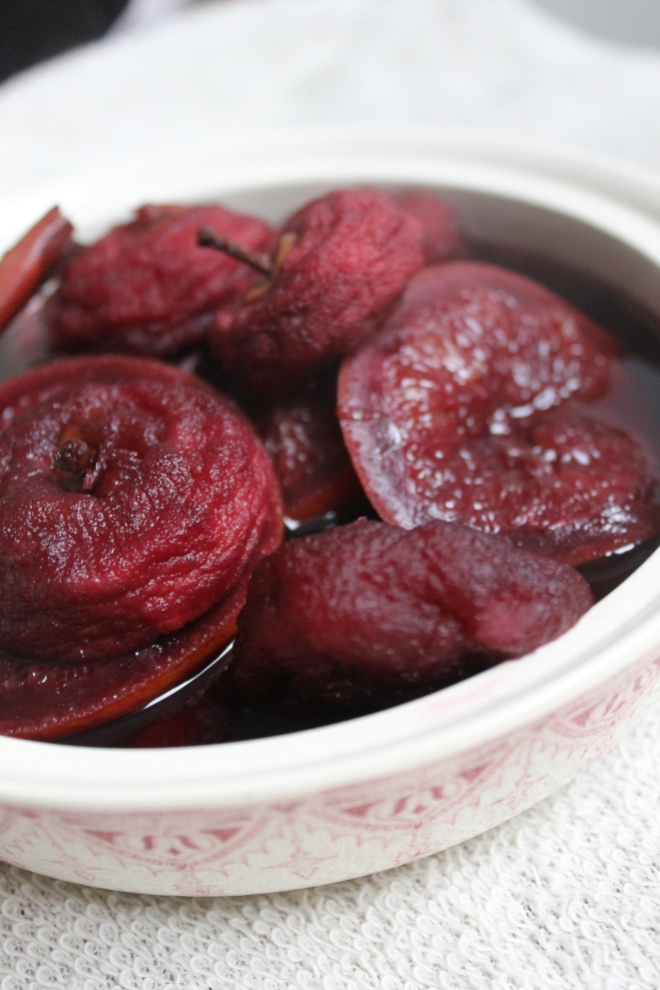


























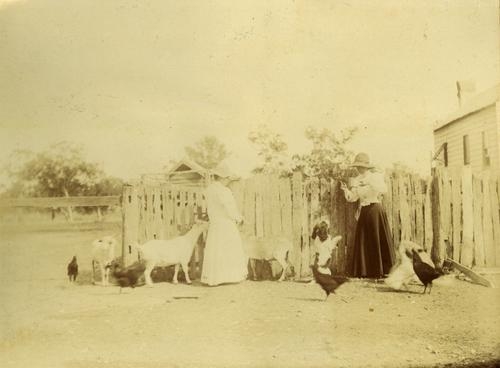

![Rock Wallaby in Rocks. By Bilby (Own work) [CC-BY-3.0 (http://creativecommons.org/licenses/by/3.0)], via Wikimedia Commons](https://turnspitandtable.files.wordpress.com/2014/09/rock_wallaby_in_rocks.jpg?w=211&resize=211%2C300)


